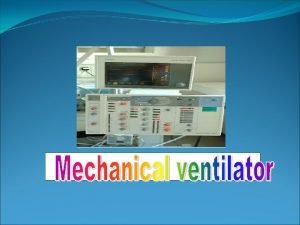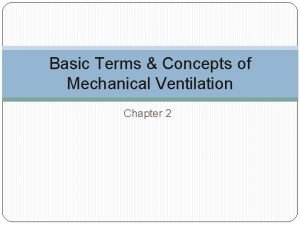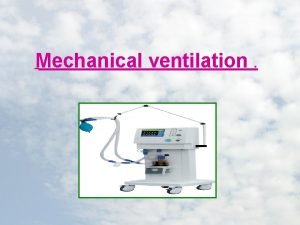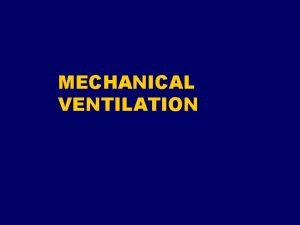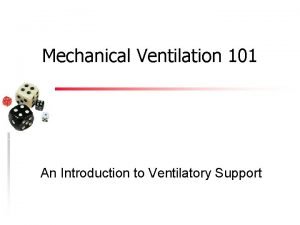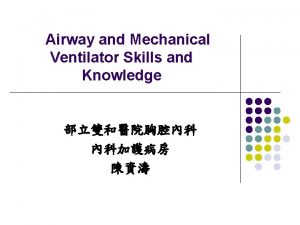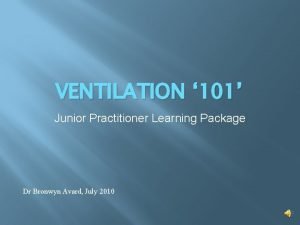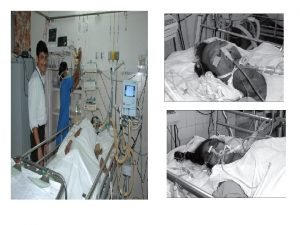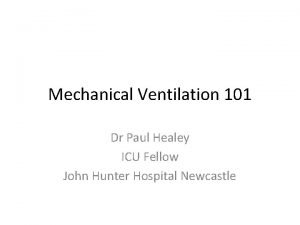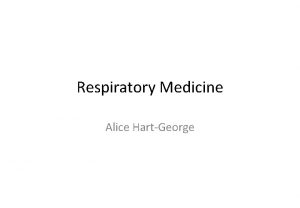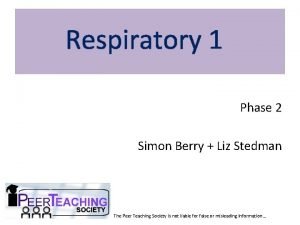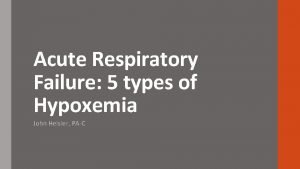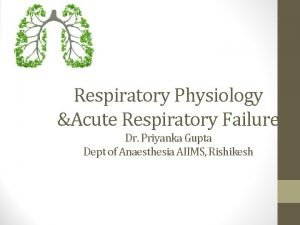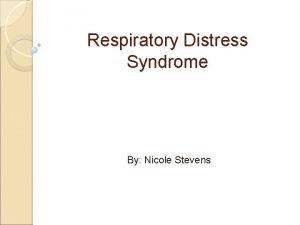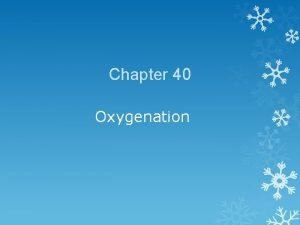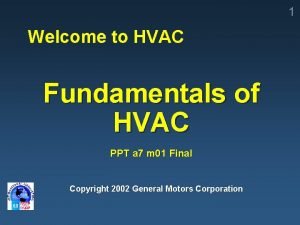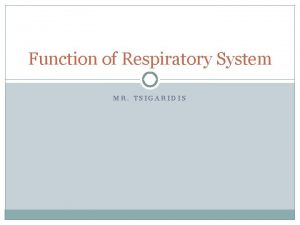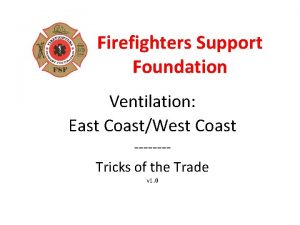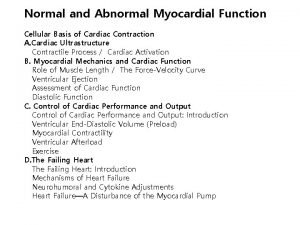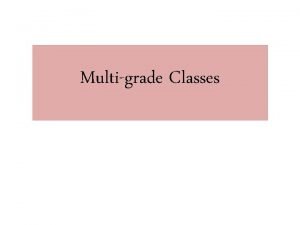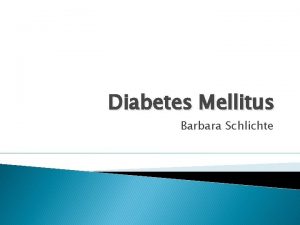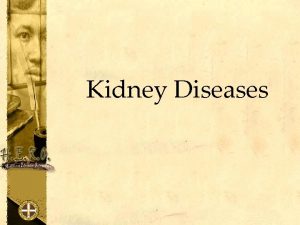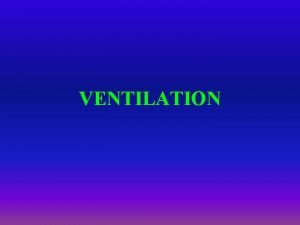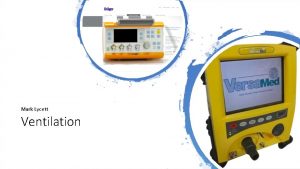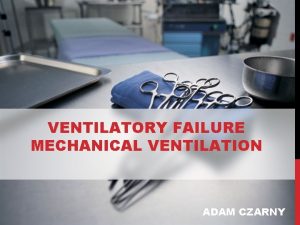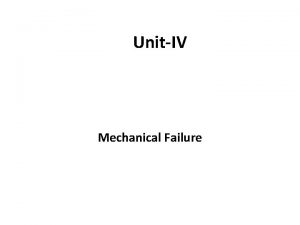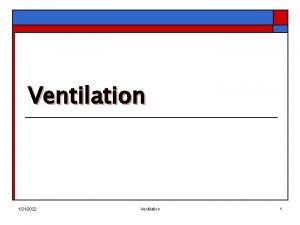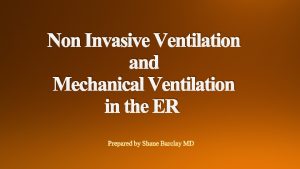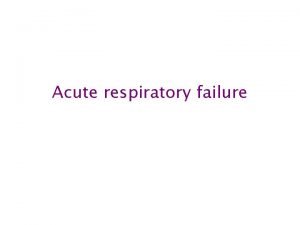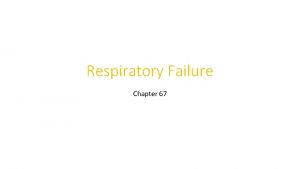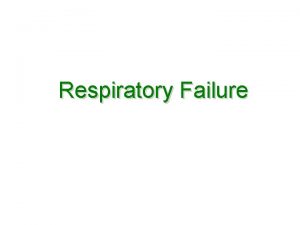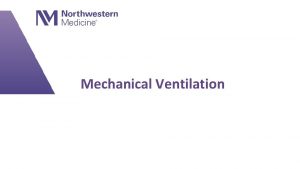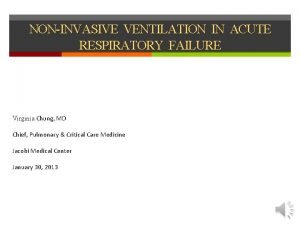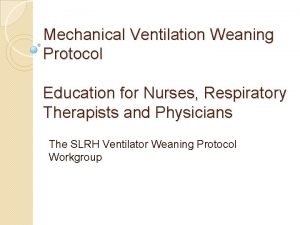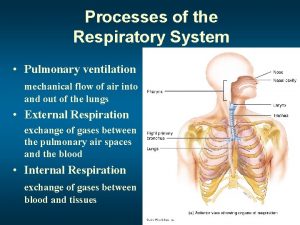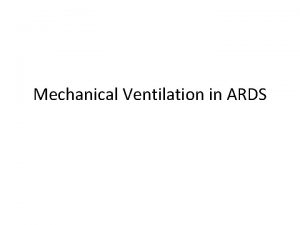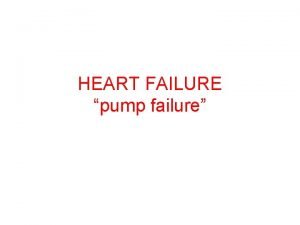Respiratory Failure and Mechanical Ventilation P Vorrakitpokatorn Respiratory








































- Slides: 40

Respiratory Failure and Mechanical Ventilation P. Vorrakitpokatorn

Respiratory Function Maintain Adequate Oxygenation and Ventilation : drive : pump : gas exchange

Respiratory Failure Definition: Inability to maintain • Oxygenation • Ventilation(pump)

Dx: RESPIRATORY FAILURE 2/4 of • OXYGENATION…. Pa. O 2<60 mm. Hg • VENTILATORY …. Pa. CO 2>50 mm. Hg • p H<7. 3 • DYSPNEA

�������� of Respiratory failure Stimulation and then depression



Central cyanosis: hypoxemia

Hypercarbia: vasodilatation, warm moist slow capillary refilled> 3 seconds

The tripod sign used to describe the classic position of a person desperate for more air:




RESPIRATORY FAILURE : Classification • Type 1. Oxygenation failur • type 2. Ventilatory failure • and mixed type

������ hypoxemia (A-a)O 2 normal (A-a)O 2 Increase ������������������ ������ Diffusion defect • Decrease Fi. O 2 V/Q mismatch • CO 2 retention True shunt Delivery≠demand

Alveolar Air Equation PAO 2= Fi. O 2 (PB-PH 2 O) - PAO 2/ R R = 0. 8 …… Fi. O 2 < 0. 6 R = 1. 0 …… Fi. O 2 ≥ 0. 6

������ Oxygenation failure : A. normal (Aa)O 2, Fi. O 2. . . … A 1. Decrease Fi. O 2 PAO 2 CO 2 PA O 2 Pa. O 2 A 2. CO 2 retention

������ Oxygenation failure B. high (A-a)O 2 PA O 2 PAO 2 Pa. O 2 B 1. Diffusion defect B 2. V/Q mismatch B 3. Shunt.

��� MV-O 2 ������� Pa. O 2 �������� decrease CO Increase used PAO 2 Pa. O 2 80% SUPPLY. … P C O 2 100 %…. . . Shunt blood Tissue O 2 DEMAND organs MV-O 2 75%

(A-a)O 2 = 20 at room air (A-a)O 2 = 100 at FIO=1 Hypoxemia (A-a)O 2? (A-a)O 2 normal • How much Pa. CO 2? • How much FIO 2?

Hypoxemia : differential diagnosis (A-a)O 2��� PV-O 2 • RS • Delivery MV-O 2 ���� : resp system Gas exchange abnormal • Diffusion • V/Q • shunt • demand Hypoxemia (A-a)O 2 MV-O 2 ��� Delivery≠demand • CVS • increase metabolism

Hypoxemia (A-a)O 2��� PV-O 2 ���� Gas exchange abnormal Not response to increase Fi. O 2 True shunt Response to increase Fi. O 2 • Diffusion defect • V/Q mismatch

Diffusion defect: • response to oxygen therapy • Worse if inadequate time to exchange as tachycardia Abn diffusion ������ Pa. O 2 ���� second ������

������� CO 2 �� VA = Effective alveolar ventilation

Pa CO 2= CO 2 production /effective ventilation CO 2 Tissue metabolism

Effective Tidal volume Breath VT = Vd + Alv ventilation Vd = ventilate but not perfuse ��������

Deadspace ventilation and CO 2 retention

Ineffective alveolar ventilation : too large dead space Dead space 1 VT

Dead space

Hypercarbia: differential diagnosis (A-a)O 2 ��� RS, Delivery≠demand Hypercarbia ( A-a)O 2 ����� Minute ventilation (MV) MV���� CNS or neuromuscular • Depress rc: PIMax ������ • Pump abn: PIMax ��� MV ���� • Ineffective ventilation (airway obstruction, vd) • ��������� • CO 2 contamination

Obstructive sleep apnea Airway obstruction

Hypercarbia: differential diagnosis (A-a)O 2 ��� Severe gas exchange failure Hypercarbia ( A-a)O 2 ����� Minute ventilation (MV) MV���� CNS or neuromuscular • Depress rc: PIMax ������ • Pump abn: PIMax ��� MV ���� • Ineffective ventilation (airway obstruction, vd) • ��������� • CO 2 contamination




FO 2 Severity of gas exchange defect Pa. O 2/Fi. O 2>200 ~ shunt <20% Spontaneous resp_increase Fi. O 2 Pa. O 2/Fi. O 2 = 150 -200 ~ shunt >20% Need IPPV especially in CVS, CNS patients Pa. O 2/Fi. O 2 <150 ~ shunt >30% IPPV+ SPECIAL CARE

. 2 Inadequate Ventilation : PARAMETERS NORMAL IPPV needed Pa. CO 2 40 50 p. H 7. 4 7. 3 ������� /���� 12 -24 < 8, >30

������� . 3 Inadequate lung expansion : ������� PARAMETERS NORMAL VT �� /�� 6 -8 Vital Capacity �� /�� 65 -75 IPPV <5 < 10

����������� + oxygen supplement RMild oxygenation, ventilation, mechanic failure RRC intact RVt>5, <15 ml/kg Rrespiratory rate >8, <30

������� • CNS. . ��������� • CVS…. �� venous return ������ • RS…. ����� oxygenation, ventilation, barotrauma • Renal…. �� urine out-put ������� • GI…. . Abdomen distention, stress ulcer • Psychic trauma • Infection
 Mechanical ventilation modes
Mechanical ventilation modes Ventricular escape rhythm
Ventricular escape rhythm Failure to pace vs failure to capture
Failure to pace vs failure to capture Cup and cone fracture occurs in
Cup and cone fracture occurs in Basic terms and concepts of mechanical ventilation
Basic terms and concepts of mechanical ventilation Negative pressure ventilation firefighting
Negative pressure ventilation firefighting How negative pressure is created
How negative pressure is created Positive pressure
Positive pressure Mechanical ventilation indications
Mechanical ventilation indications Ventilators 101
Ventilators 101 Indication for mechanical ventilation
Indication for mechanical ventilation Mechanical ventilation learning package
Mechanical ventilation learning package Mechanical ventilation definition
Mechanical ventilation definition Complications of mechanical ventilation
Complications of mechanical ventilation Type 1 respiratory failure abg
Type 1 respiratory failure abg Blue bloaters vs pink puffers
Blue bloaters vs pink puffers What is a-a gradient
What is a-a gradient Priyanka breathing
Priyanka breathing Respiratory failure type
Respiratory failure type Nursing management of dyspnea ppt
Nursing management of dyspnea ppt Respiratory zone
Respiratory zone Actual mechanical advantage vs ideal mechanical advantage
Actual mechanical advantage vs ideal mechanical advantage Factors affecting oxygenation in nursing
Factors affecting oxygenation in nursing Hvac system ppt
Hvac system ppt Pulmonary ventilation consists of two cyclic phases
Pulmonary ventilation consists of two cyclic phases Bed and bedding nightingale
Bed and bedding nightingale East coast ventilation
East coast ventilation Failure of supporting utilities and structural collapse
Failure of supporting utilities and structural collapse Heart failure and frank starling law
Heart failure and frank starling law Advantages and challenges of multigrade teaching
Advantages and challenges of multigrade teaching Failure mode and effect analysis
Failure mode and effect analysis Ddmin
Ddmin Factors of project success and failure
Factors of project success and failure Cycle of success in service marketing
Cycle of success in service marketing Diabetes and heart failure
Diabetes and heart failure Diabetes and heart failure
Diabetes and heart failure Failure defeats losers and inspires winners
Failure defeats losers and inspires winners Kidney failure urine color chart
Kidney failure urine color chart Cycle of failure mediocrity and success
Cycle of failure mediocrity and success Lev system design
Lev system design Acgih industrial ventilation
Acgih industrial ventilation
